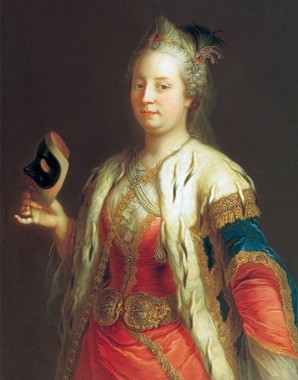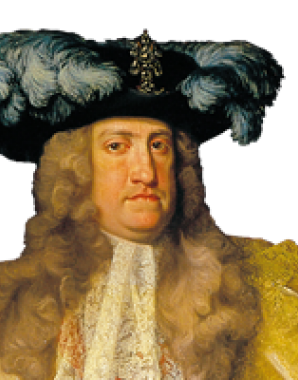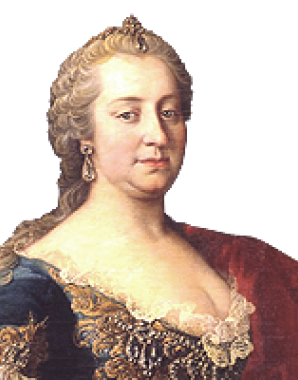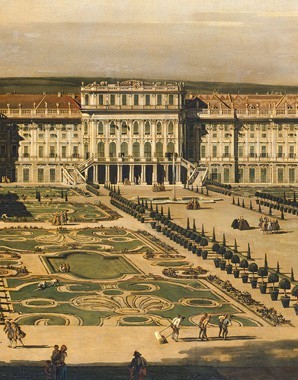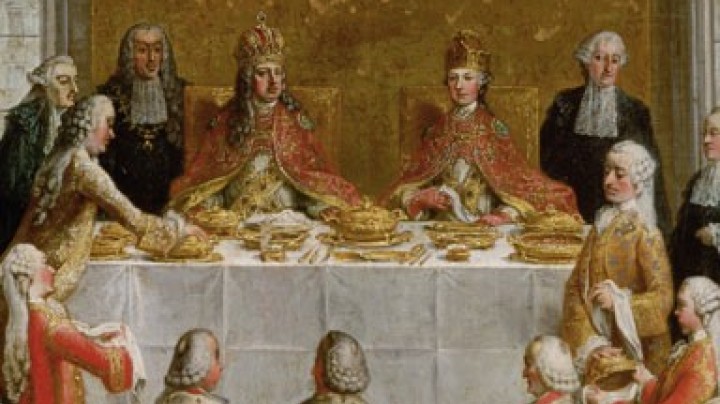Viennese masquerades
Disguised as the ‘innkeeper and his wife from the Black Eagle’, Franz Stephan of Lorraine and Maria Theresa danced at the Viennese masquerades – and seldom remained incognito.
In a diary entry for 7 January 1743 Prince Khevenhüller-Metsch describes the participation of the imperial couple at a Maschere (masquerade).Maria Theresa and Franz Stephan themselves came ‘frequently to the Ballhaus in order to see the masquerades and were never so content as when they disguised themselves so that they were unrecognized, although they seldom succeeded in this; they were soon recognized in particular by their nimble and unconstrained démarche’.
Many different branches of the arts were involved in the creation of the Gesamtkunstwerk that was the Baroque festivity. They included ballet, which had been a courtly art even as far back as the reigns of Leopold I and Charles VI. The love of dancing rose to a height at Shrovetide or carnival time: ‘dance, Redoute, pasterella, dance in masquera, Italian comedy’ provided entertainment; rest days even had to be instituted between these diversions so that the courtiers could recover.
Dancing occupied an important place in social life: Maria Theresa danced the minuet and adored the Viennese masquerades. So-called ‘Pauernhochzeiten’ (peasant weddings) offered the opportunity of creating an ‘upside-down world’: the imperial couple received their guests as the ‘innkeeper and his wife from the Black Eagle’; in 1730 Maria Theresa dressed up as a Lower Austrian peasant. The guests appeared in costume as figures from the lower social orders, such as cooks or servants, or in the costumes of various nationalities, while some even donned more exotic garb as Romans, Persians, Turks or ‘slaves’.
The higher nobility gave numerous balls and dances in their palaces or at the Mehlgrube, a public dance hall on Neuer Markt, which was reserved exclusively for the nobility. A highlight of these festivities was the harlequin masked ball held on 17 February 1744: thirty-three couples costumed as harlequins assembled in a darkened room at Schönbrunn and sought out partners for the evening before being driven in a fleet of court carriages to the Ballhaus in the Hofburg and afterwards celebrating at the Mehlgrube into the early hours of the morning.
During the carnival season in 1743 Maria Theresa had allowed masks to be worn at court festivities – for the first time at the Habsburg court. Nonetheless, this was only permitted for the ‘high noblesse’, as Prince Khevenhüller-Metsch related. Costumes were not allowed to be worn at dances in the Mehlgrube. According to Khevenhüller-Metsch, masks encouraged amorous intrigues and advances.
Carnival events had been known to result in excesses and disorder – murders had even been committed under the cover of a mask. The wearing of masks on the street was therefore forbidden upon pain of severe punishment to all classes including the nobility. This regulation was aimed in particular at guaranteeing security and preventing political conspiracy amongst the lower social orders.




